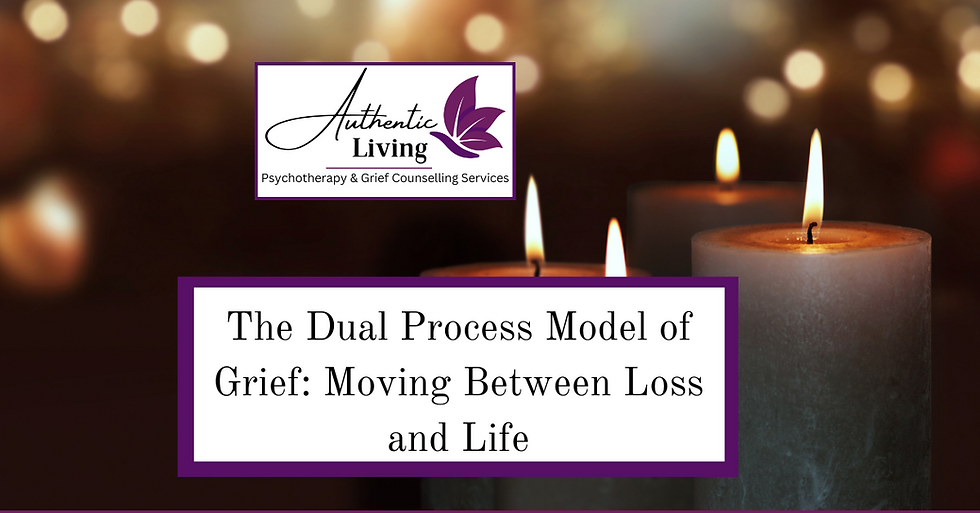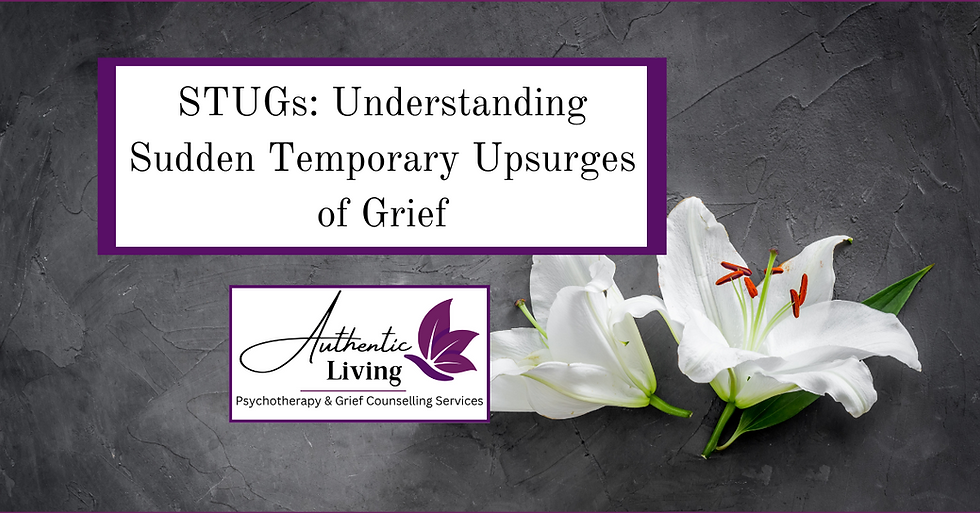The Dual Process Model of Grief: Moving Between Loss and Life
- Aug 20
- 3 min read
When we think about grief, we often imagine it as a straight road with stages to move through one by one. But grief is rarely that neat. It’s more like waves, pulling us back and forth between missing the person who is gone and trying to figure out how to live in a world without them. The Dual Process Model of Grief offers a way to understand this shifting experience. It shows us that it’s normal to move between moments of sadness and moments of rebuilding, and that both are part of healing.

What Is the Dual Process Model of Grief?
Developed by researchers Margaret Stroebe and Henk Schut, the Dual Process Model describes grief as a process of oscillation, meaning we naturally move back and forth between two states:
Loss-oriented coping: Facing the pain of the loss, remembering the person, and allowing space for emotions like sadness, anger, or longing.
Restoration-oriented coping: Adapting to life changes, taking on new roles, finding routines, and focusing on day-to-day tasks or future goals.
Instead of expecting ourselves to stay in one state, this model accepts that both are necessary. We cannot only sit with our pain, and we cannot only avoid it by staying busy. Healing happens as we move between the two.
Loss-Oriented Coping: Sitting With the Grief
Loss-oriented coping is when we allow ourselves to truly feel the weight of our grief. This may involve:
Crying or expressing sadness
Talking about memories of the person who died
Looking at photos or visiting meaningful places
Acknowledging anniversaries or important dates
Although painful, these moments are not setbacks. They are part of the healthy expression of loss.
Restoration-Oriented Coping: Rebuilding Life
Restoration-oriented coping is about adjusting to a new reality. This can look like:
Learning how to handle responsibilities the person once managed
Returning to work or school
Building new routines
Reconnecting with hobbies or relationships
Exploring personal growth and future goals
These steps can feel overwhelming, but they are also what allow life to slowly take shape again.
The Back-and-Forth of Grief
One of the most comforting aspects of the Dual Process Model is that it normalizes the back-and-forth nature of grief. You may spend a morning looking through old letters and crying, then spend the afternoon focused on work. You might laugh with friends one evening and feel deep sadness the next morning. This oscillation is not avoidance or weakness. It’s the natural rhythm of grieving.
Why This Model Matters
Many people feel pressure to “move on” or to stay strong without showing sadness. Others may worry they’re not grieving correctly if they laugh, enjoy life, or feel relief at times. The Dual Process Model reminds us that both loss and restoration are part of the journey. Allowing yourself to move between the two makes space for both honoring your loved one and moving forward in life.
How Therapy Can Help
At Authentic Living London, we understand how confusing and exhausting grief can be. Our therapists create a safe, compassionate space to explore both sides of the grieving process. Whether you need to sit with the heaviness of your loss or find support in adjusting to new routines, we walk alongside you as you move through both.
You don’t have to grieve alone. If you are struggling with the push and pull of loss and life, reaching out for therapy can give you tools, validation, and support.










Comments